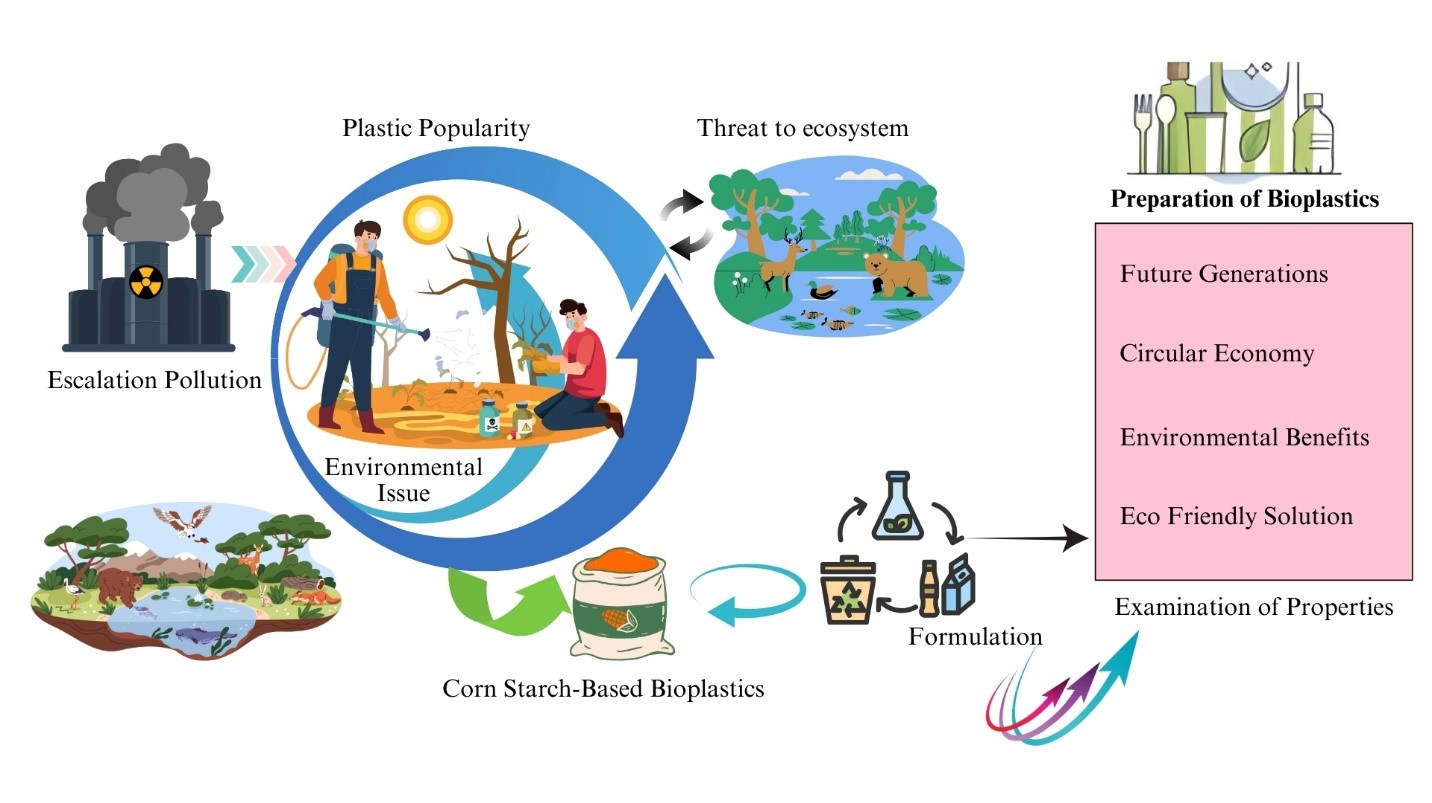
Plastic has gained significant popularity due to its lightweight, durability, and cost-effectiveness compared to traditional materials like metals and clay. However, its non-biodegradable nature has led to an alarming escalation in environmental pollution, posing a severe threat to ecosystems. To address this issue, the current study evaluates the potential of corn starch-based biodegradable plastics as a sustainable alternative to conventional plastics. This research focuses on the formulation of bioplastics by combining 10% corn starch with plasticizers like glycerol and fructose at varying concentrations (15%, 30%, 45%, and 60% by weight). The bioplastics were prepared using traditional solutions to create eco-friendly materials that reduce reliance on petroleum-based plastics, thereby promoting a greener and more sustainable environment. Key physical and mechanical properties, including water solubility, tensile strength, water absorption, and biodegradability, were thoroughly examined. The findings highlight that bioplastics made from corn starch demonstrate remarkable biodegradability, breaking down naturally without harming the environment. Moreover, these bioplastics exhibit superior mechanical properties, such as enhanced tensile strength and durability, compared to traditional polymers. The environmental benefits of corn starch-based plastics are profound. They significantly reduce industrial waste and lower the risks associated with conventional plastics, such as pollution and resource depletion. Additionally, they offer an economically viable solution for industries seeking sustainable alternatives. By adopting bioplastics derived from renewable resources like corn starch, we can move closer to a circular economy. This shift not only minimizes the environmental footprint but also safeguards ecosystems for future generations.
Total file downloads: 99